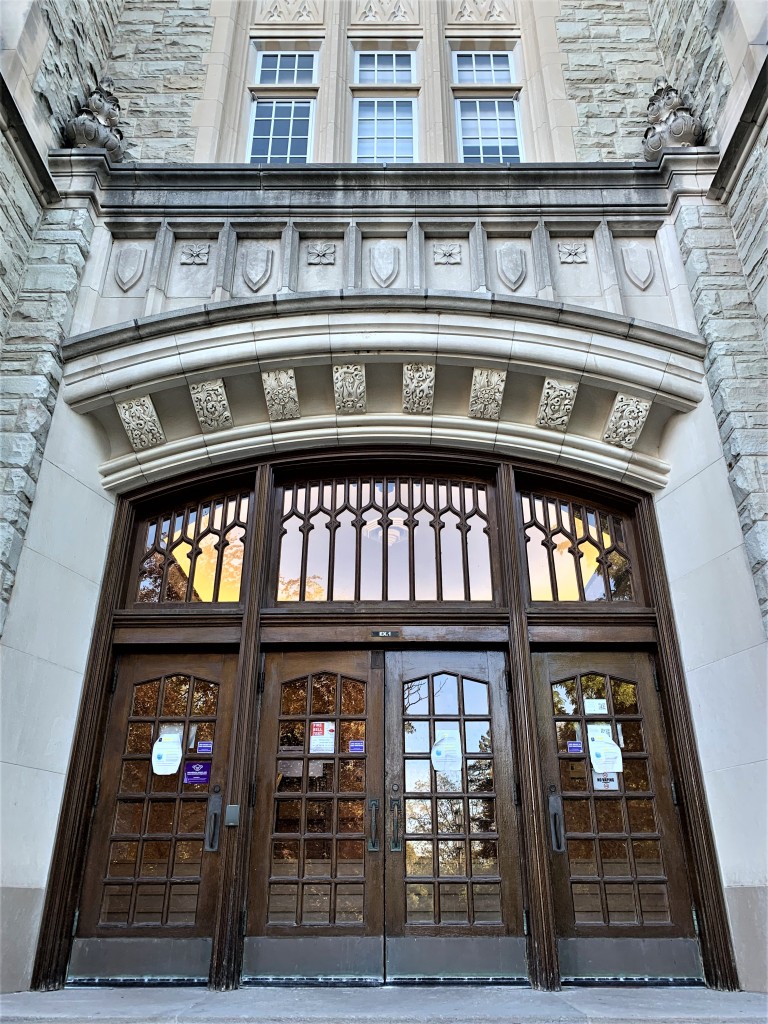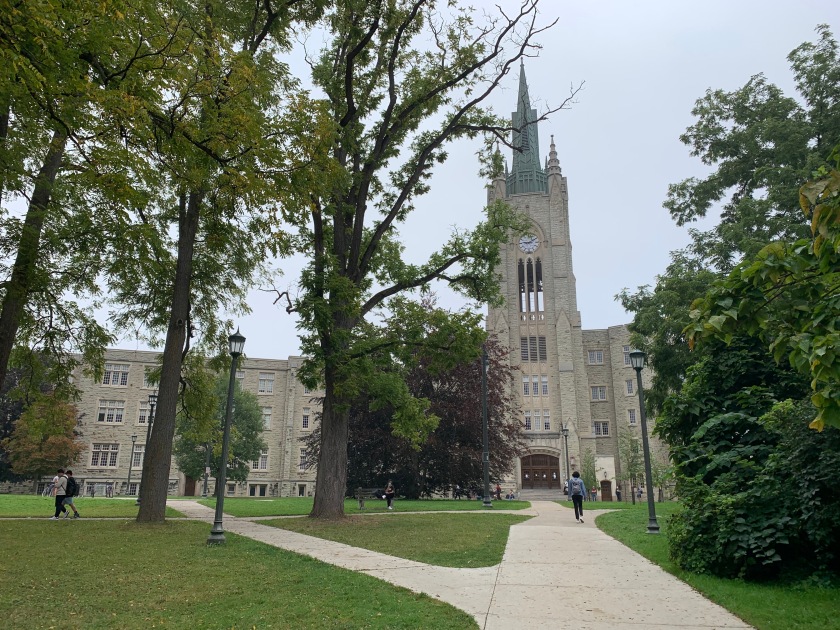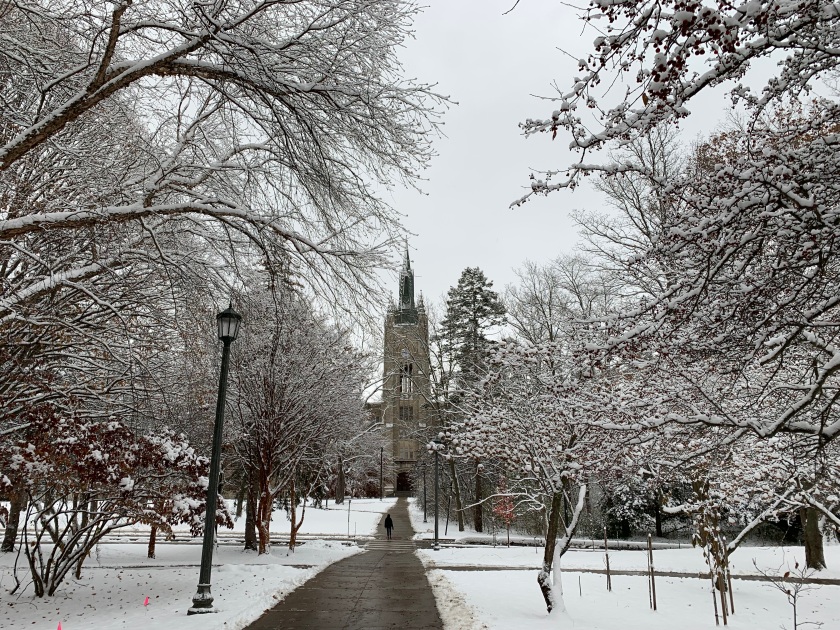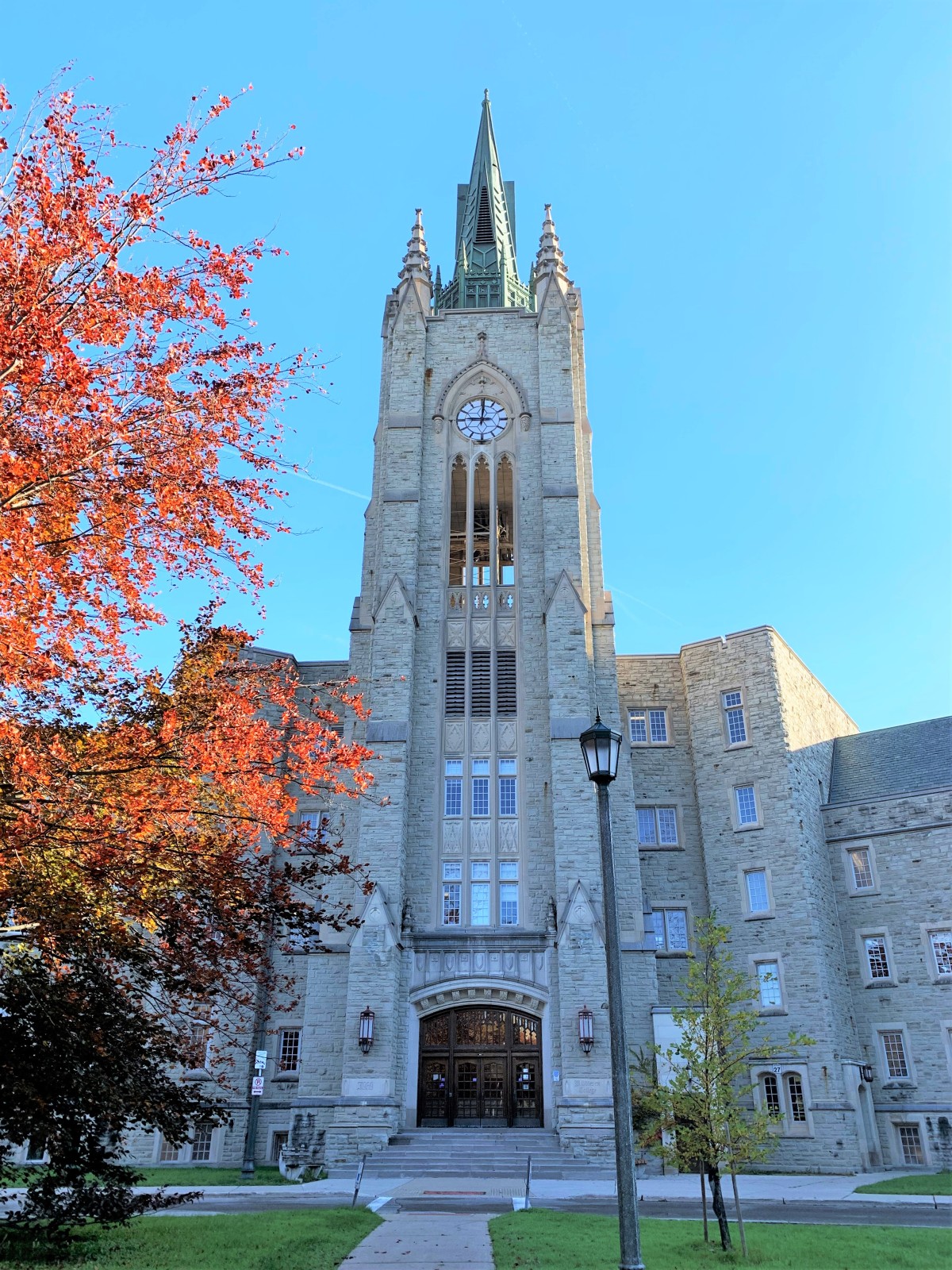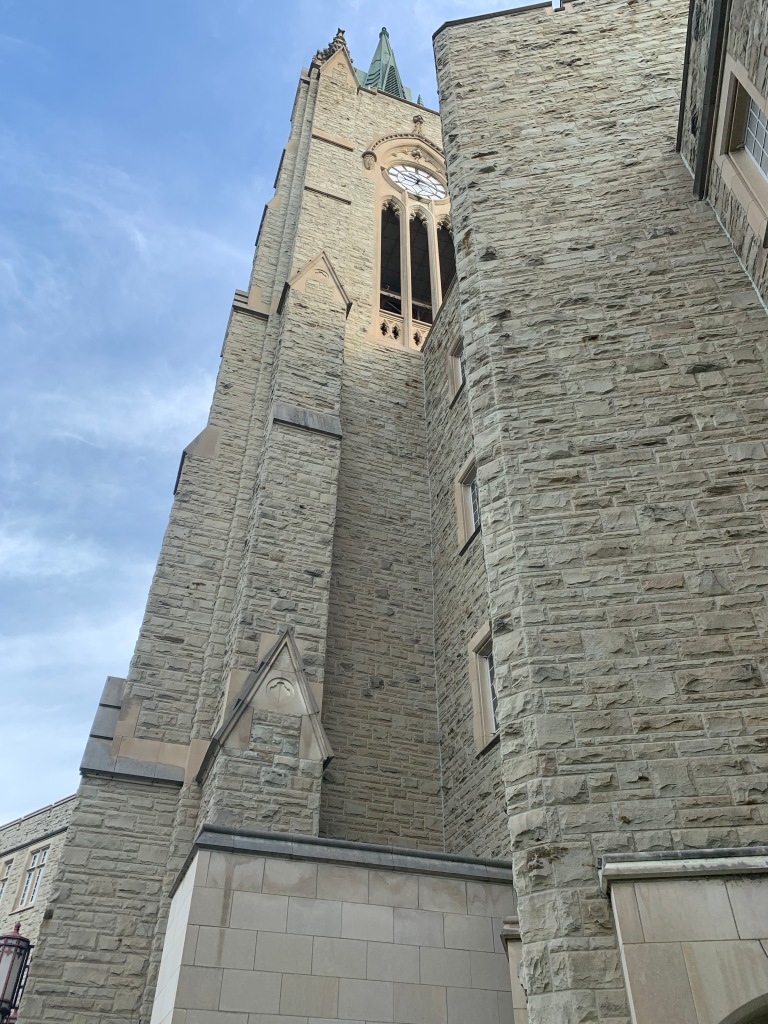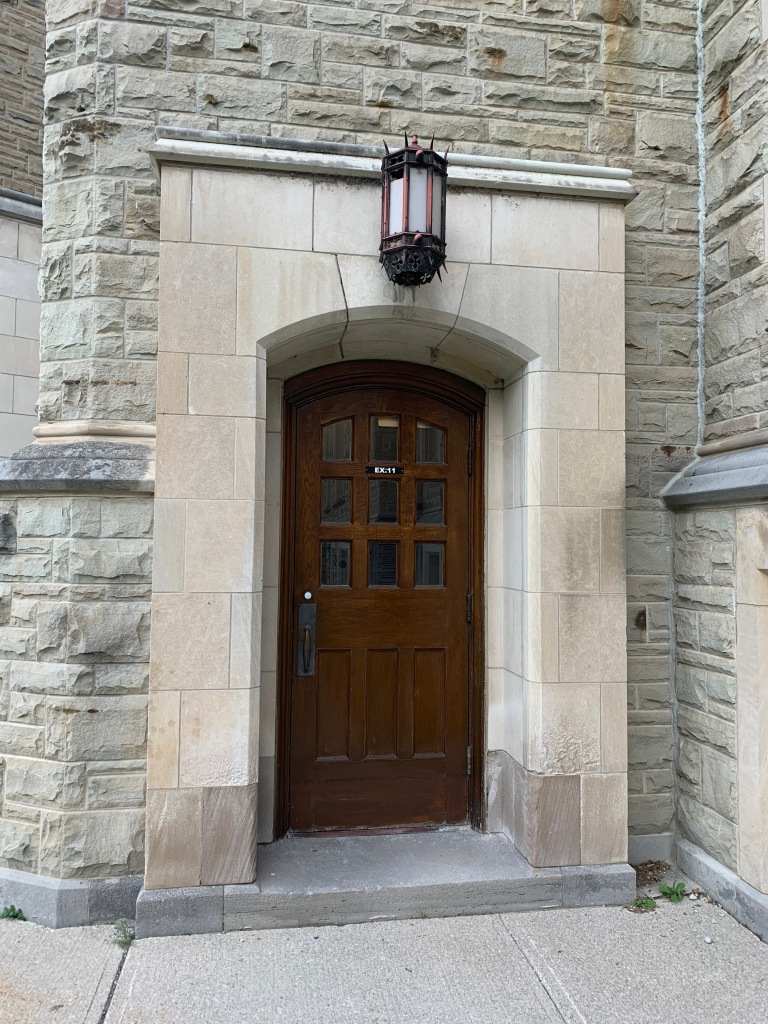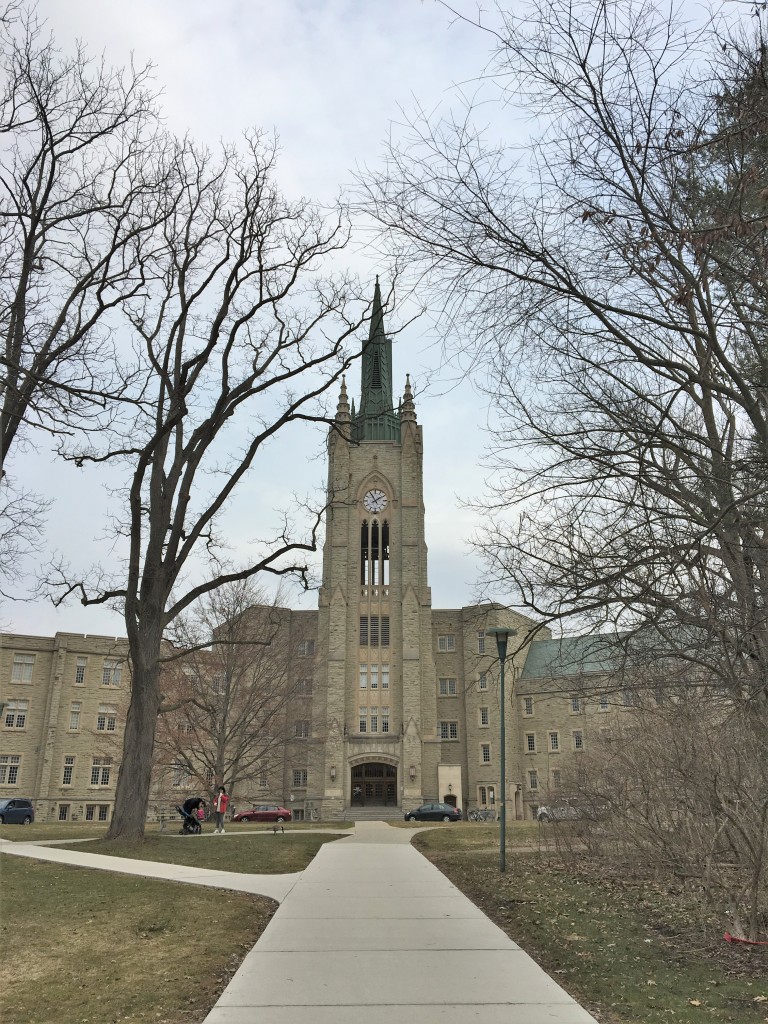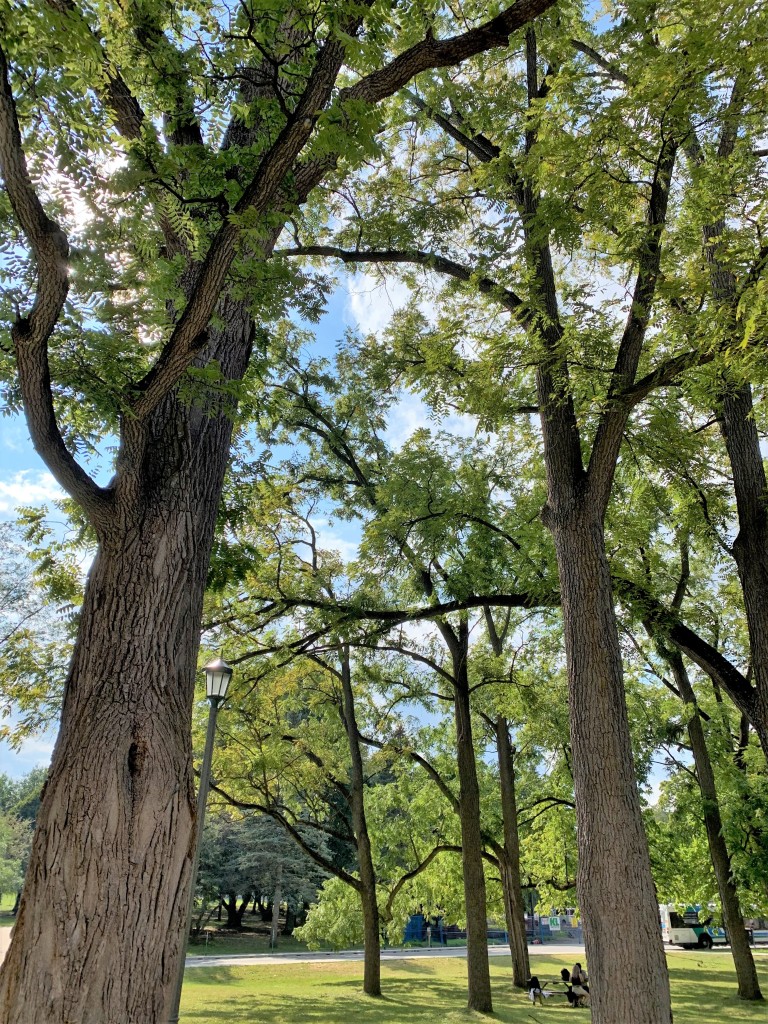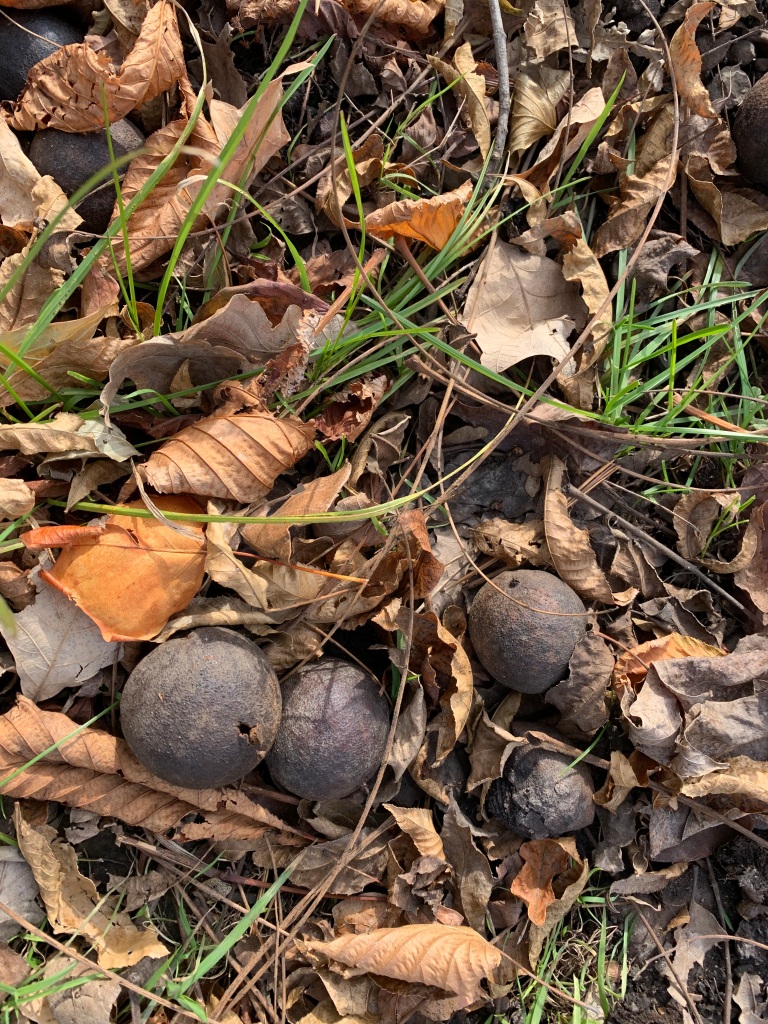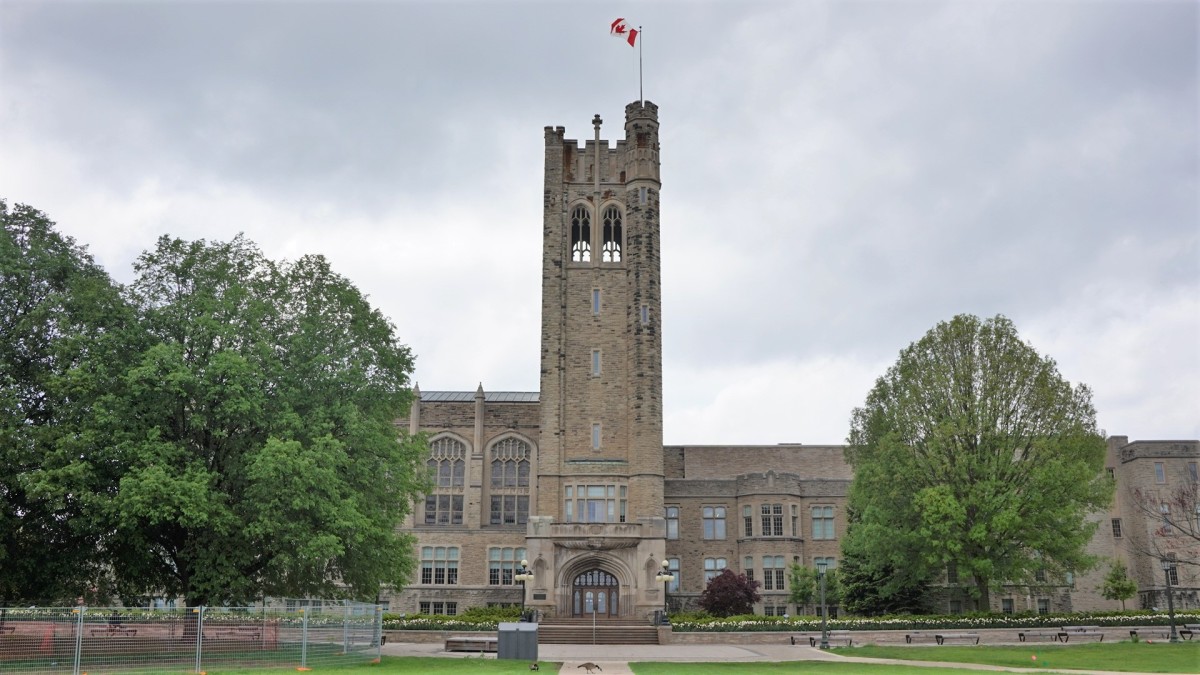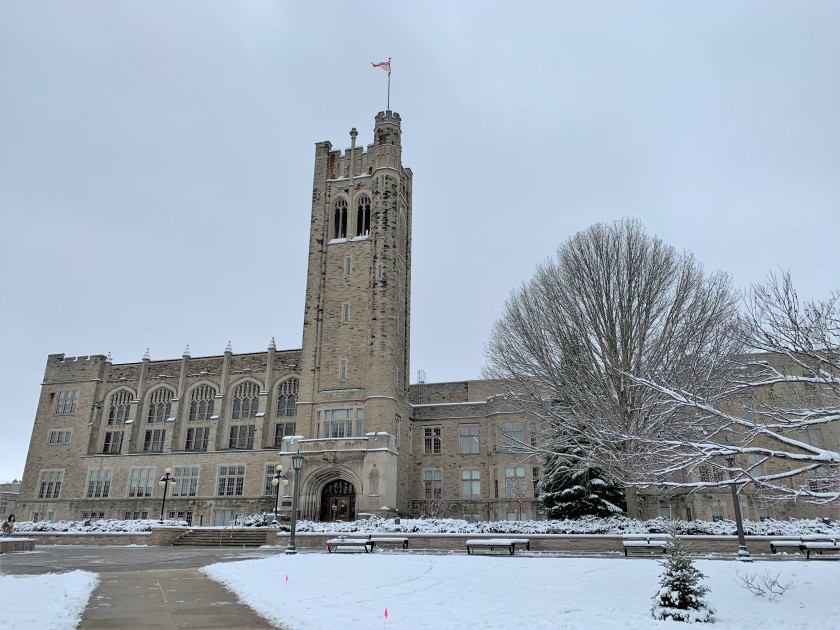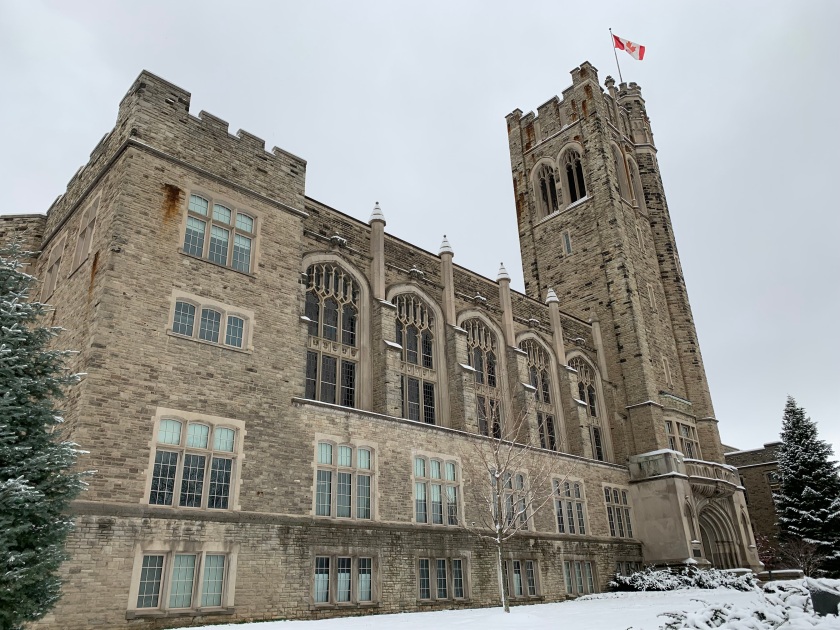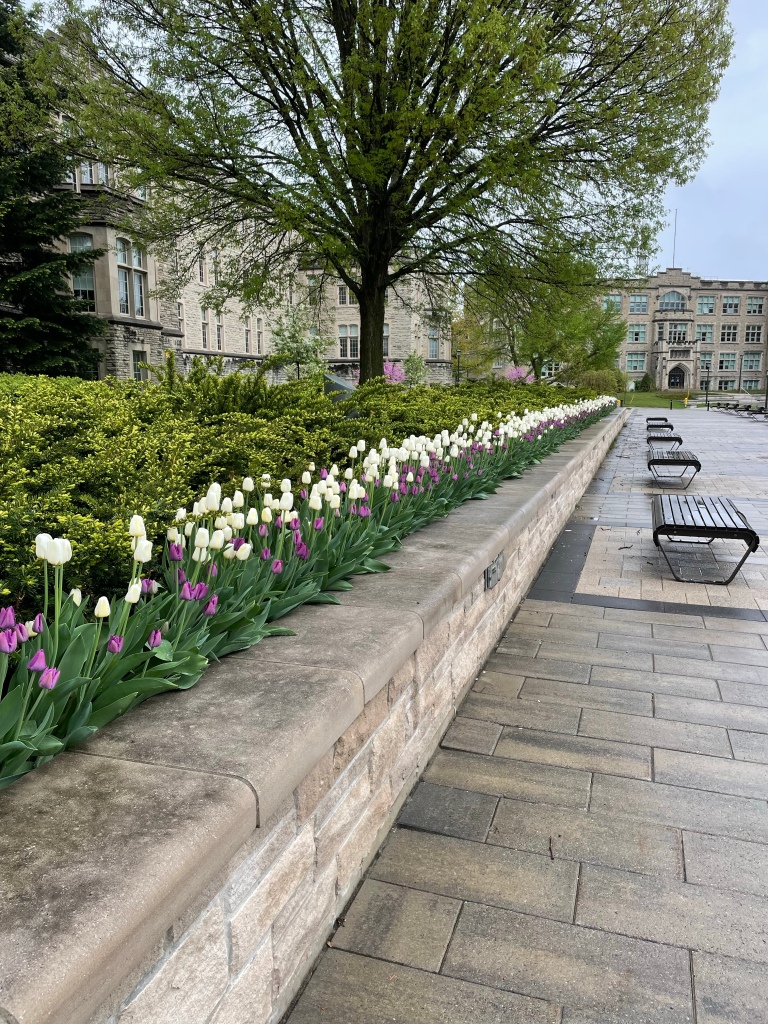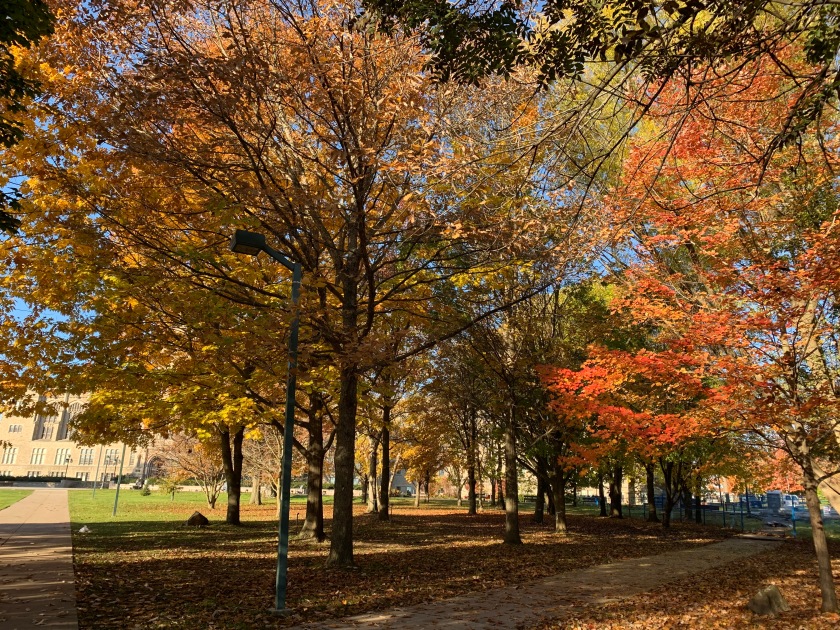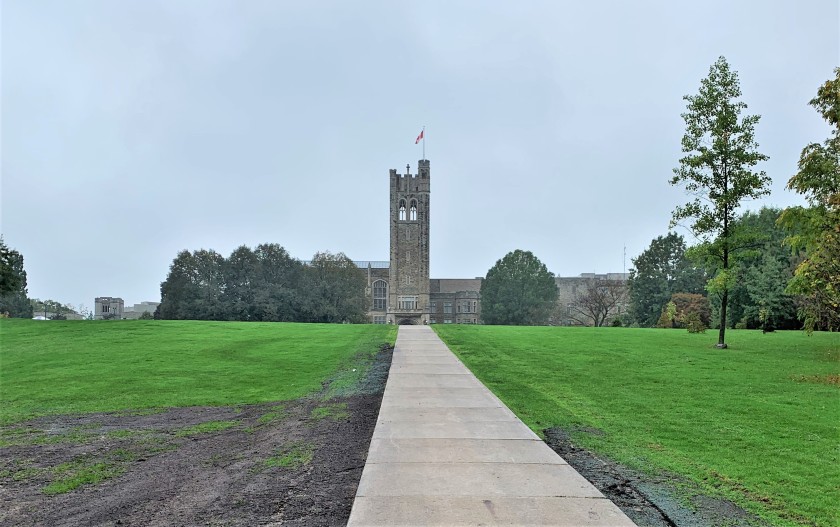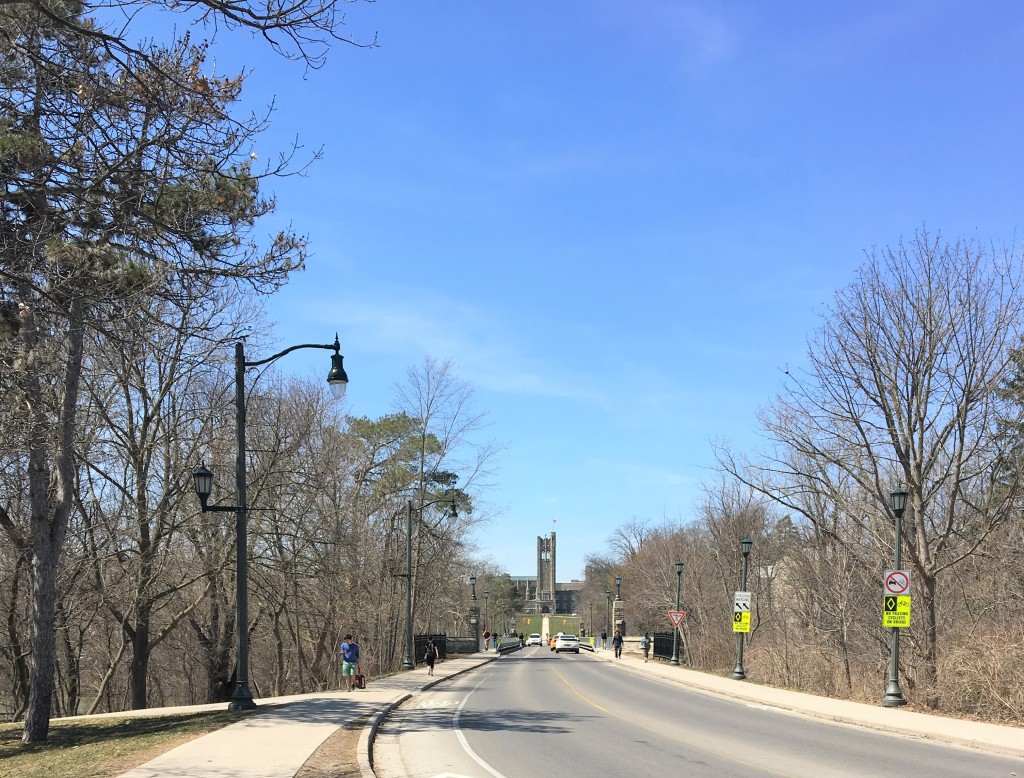This is not the Matrix. Nor am I a mathematician. The featured photo is of a map of a rural municipality, or district, in Saskatchewan. The photograph below demonstrates the aesthetics of mathematical repetition and symmetry, here applied across a landscape. Yet, in a blog about identity and space interacting, I have to ask, how does a predetermined cartography of prairie space impact people’s interaction with landscape and each other?
Saskatchewan, surveyed into a grid system of equal parcels, takes on a patchwork-quilt appearance when seen from above. At its simplest, the visual dynamics of landscape evokes a sense of egalitarianism, where boundaries form adjacent spaces of accepted difference.

- photo source: Town of Carrot River, SK webpage http://www.town.carrotriver.sk.ca/carrot_river_aerial_views.htm
The grid system is an elegant mathematical solution to real human problems of colonial homesteading in claimed spaces. Like all good innovations, the Canadian survey borrowed from an existing system (used in mid-western United States), but improved it.
Canadians included road allowances within sections, and set aside reserved tracts of land for communities and to honour treaty agreements with indigenous First Nations people.
The land survey system was numbered differently from the American’s system, and correlates with a land title registry . The title system, unique to western Canada and Australia, does not operate with a deed, employing a governing agency to manage land ownership records, organized by land location, in a transparent and public information system.

a rural municipality shown on a map, with water bodies, roads, rail lines township allowances, and community pasture

the red detail shows where the RM fits within the province of Saskatchewan

A village within three quarter-sections, with a rail line connecting it to a large matrix of rail roads

RMs are laced with road ways. A primary grid road, shown in the red north-south line, is a gravel-covered road wide enough for two vehicles to meet and pass each other. This one runs through the center of the RM. The remaining roads are gravel to dirt trails of varying quality. The jogs in the north-south roads seen here are correction lines. In real life, they are small expanses of angled road that connect otherwise straight lines. Corrections are required when trying to overlay a grid on a sphere, like the Earth, and to keep a true north-south bearing.
This system was established to simplify land title transfer, and to protect citizens from land swindling. When deeds are used to prove ownership of property, the responsibility of protecting and authenticating property documents rests with individuals. As it happened in other colonial settlements where the system of land ownership was left unregulated, homesteaders purchased property in good faith, only to discover that their purchase brought them into conflict with people already making the same claim of ownership.
A government-managed land title system requires sales of property to be registered, where ownership can be verified and recorded. All liens made on a property are registered to a title (i.e. mortgages are listed on titles), and must be discharged before title transfer is permitted. In the case of public access allowances (like roads) or any building encroachments (a neighbour builds a garage over a property line or an oil company buries a pipeline in a field), such are recorded on the legal survey that is registered with the title.
Before the Canadian prairies were open to settlement, a land survey was first completed. The Saskatchewan survey began in 1871, the province was divided into one-mile grid sections, each subdivided into quarter section parcels comprising 160 acres per quarter section.
Eligible settlers could homestead a quarter section. To be permitted ‘entry’ to a homestead, settlers appeared at a government land titles office, filed for a homestead, and then had to meet conditions of land development to eventually own the homestead.

- 1909 land titles office Prince Albert, Saskatchewan
source: Sask Archives Board
Not everyone could file for a homestead, and in the first years of homesteading rules changed to increase inclusivity. At first, only men aged 21 or older could enter a claim. Two years later, in 1874, the age was lowered to 18 years or younger if it could be proved he was the sole head of house hold. In 1897 homesteading laws changed to permit women–if they could prove they were the sole head of the household–to enter a homestead claim.
In 1908 other changes were introduced to the Homestead Act, and as a result, only British subjects (or those declaring intention to become a British subject) could enter a claim for homesteading.
Ownership of land was granted only after the homesteader met certain conditions of homesteading. Just as eligibility conditions for entering a claim changed over time, so did requirements for achieving a homestead.
Initially, all eligible homesteaders need only cultivate and reside on the land for three years. In 1884, rules changed so that the “settler must build a habitable house and reside on the homestead,” and time frames were assigned for breaking and cropping acres. Location of residence also had requirements. Between 1872 and 1914 the rules for establishing a homestead changed several times, and in 1914 it was determined that quarter section homesteads had to be enclosed, along the whole perimeter, with a fence.
Homesteads were free to all who were eligible and could pay the $10 administration fee. A settler who met all conditions within the three-year period of gaining entry to a homestead “proved” his claim and ownership of title transferred to him. In 1874, provisions were made to allow homesteaders to purchase additional quarters of land within close proximity to their homesteaded quarter. The prices were set at a fixed rate.
The stringent rules for homesteading were initially established to keep the homesteading opportunity fair and available to everyone wishing to make western Canada their home. Speculators, land-buyers who obtain large tracts of land and hold it to resell for profit in future, were discouraged by requiring development or improvements of property. But as the provincial government made changes to the Homestead Act, it imposed restrictions on more than swindlers and speculators, limiting who could enter and prove a homestead claim.
 The prairie land and sky seems open and endless, even too vast to populate. The government of Canada called upon people from all over the world, with their differences of language, custom, and appearance, to fill the territory. As the spaces became inhabited, and the vastness diminished, so did the fairness and equality of the homesteading opportunity.
The prairie land and sky seems open and endless, even too vast to populate. The government of Canada called upon people from all over the world, with their differences of language, custom, and appearance, to fill the territory. As the spaces became inhabited, and the vastness diminished, so did the fairness and equality of the homesteading opportunity.
An elegant and objective system, but vulnerable to human emotions and insecurities, the Canadian settlement process is still working out its issues. We live with rhetoric of a multicultural nation, still struggling to put into practice every day, and to reconcile our past mistakes. I can suggest that prairie space, its patchwork of landscape and people, remains a space of negotiation as we begin to understand the need to cultivate and support our differences.
